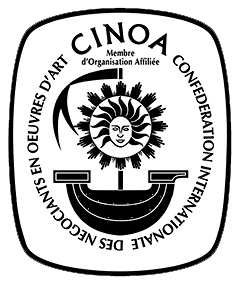Set of four turned ivory candlesticks
Global shipping available
- Origin
- South Germany, Nuremberg (?)
- Period
- Mid 17th century
- Material
- ivory
- Height
- 18.5 cm
- Diameter
- 10 cm
- Literature
N. Andrews, ‘The Ivory Turn: Of Solids, Curves, and Nests’, in: W. Koeppe (ed.), Making Marvels, Science and Splendor at the Courts of Europe, New York 2019, pp. 121 - 128.
K. Maurice, ‘The Princely Art of Turning - on the Aesthetic Significance of the Natural and Technology’, in: G. Laue (ed.), Gedrehte Kostbarkeiten / Turned Treasures, München 2004, pp. 17-23.
R.F. Michaelis, Old Domestic Base-Metal Candlesticks, Suffolk 1978, p. 33, 34.
Questions about this object?
Please use one of the contact options below:
Description
Four extraordinary seventeenth-century pin candlesticks made of turned ivory. The candle could be placed on the pin at the top of the candlestick, the grease trap underneath caught the melting candle wax. The four candlesticks have the same design: a conical base continues into a profiled trunk with a wide disc, a vase and several rings, followed by a grease trap. The candlestick consists of five separate parts, which are screwed together. The wide, profiled grease trap has the shape of a deep dish and protruding edges. The entire candlestick is decorated with thinly turned rings. The candlepin is spherical at the base and ends in a point. The shape of the candlesticks suggests that they originated in the South of Germany.
Ivory turning was a distinguished hobby in the sixteenth and seventeenth centuries, practiced by European nobility, princes and kings. Turning of ivory, using a mechanically powered lathe, was seen as an appropriate and virtuous pastime, in which the practitioner was trained in precision and concentration, and at the same time created fascinating objects which often served as (diplomatic) gifts or were part of a cabinet of curiosities. Craftsmen specializing in turning ivory acted as teachers for the nobility, often staying at court. Exceptionally beautiful ivory objects and masterpieces from various early modern noble families and royal houses are known, which were not made for but by them. The turning was done mechanically with a lathe: a piece of ivory was fixed in the lathe, which could make the object move in two or three directions at the same time. The maker took a sharp object and held it to the rotating ivory. The different movements and directions of the mechanism allowed the maker to shape the piece of ivory as desired. The craftsmanship of the maker, and in particular his or her geometrical and spatial insight, steady hand and precision, determined the complexity and sophistication of the final object. The mechanism of the lathe, which can be adjusted, makes these exceptional turned ivory objects the first examples of "machine-generated art".
Cites: 22NL308880/20








